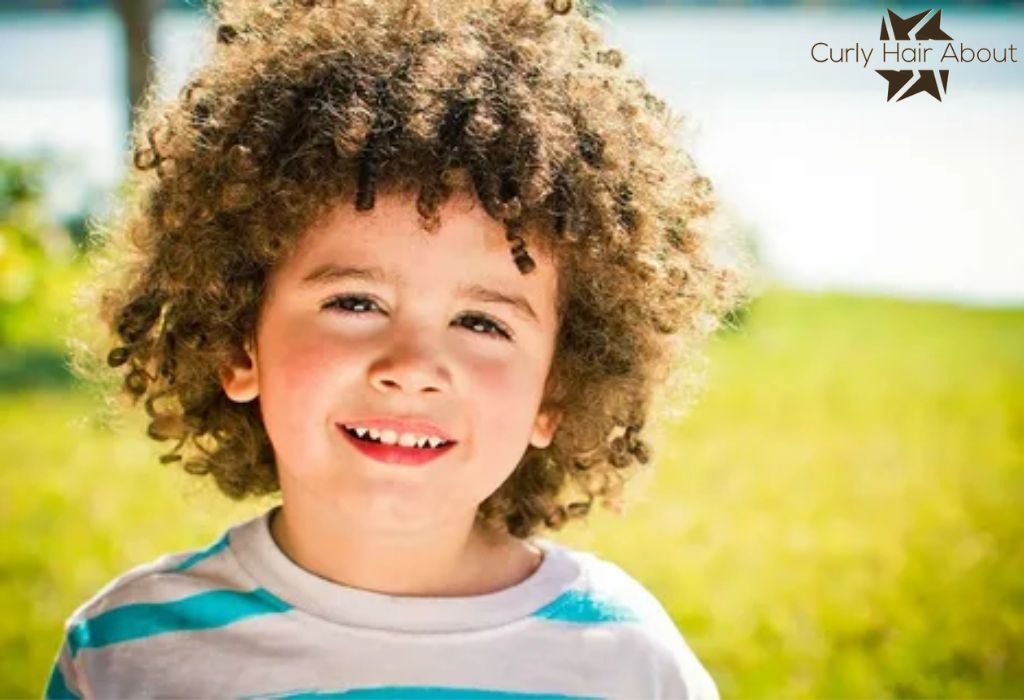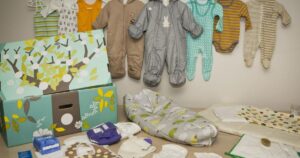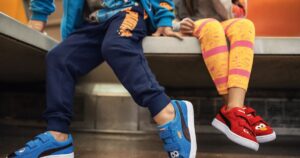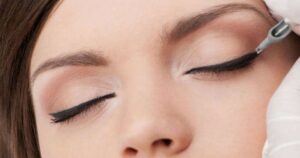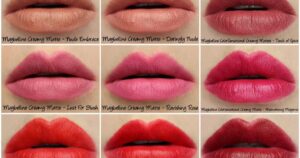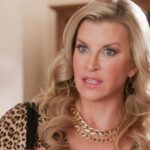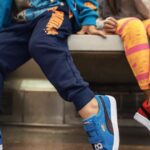My baby has curly hair simply means that the person’s infant possesses hair with natural curls. It’s a straightforward statement describing the texture or pattern of the baby’s hair.
In the enchanting tapestry of parenthood a question lingers with anticipation Will my baby have curly hair? As you eagerly await the answer, the promise of delightful curls becomes a captivating thread woven into the fabric of your journey into parenthood.
The texture of a baby’s hair is influenced by genetics. If both parents carry the curly hair gene there’s a higher likelihood that the baby will have curly hair. However other factors such as environmental conditions and age can also play a role in hair texture.
When do baby hair start?
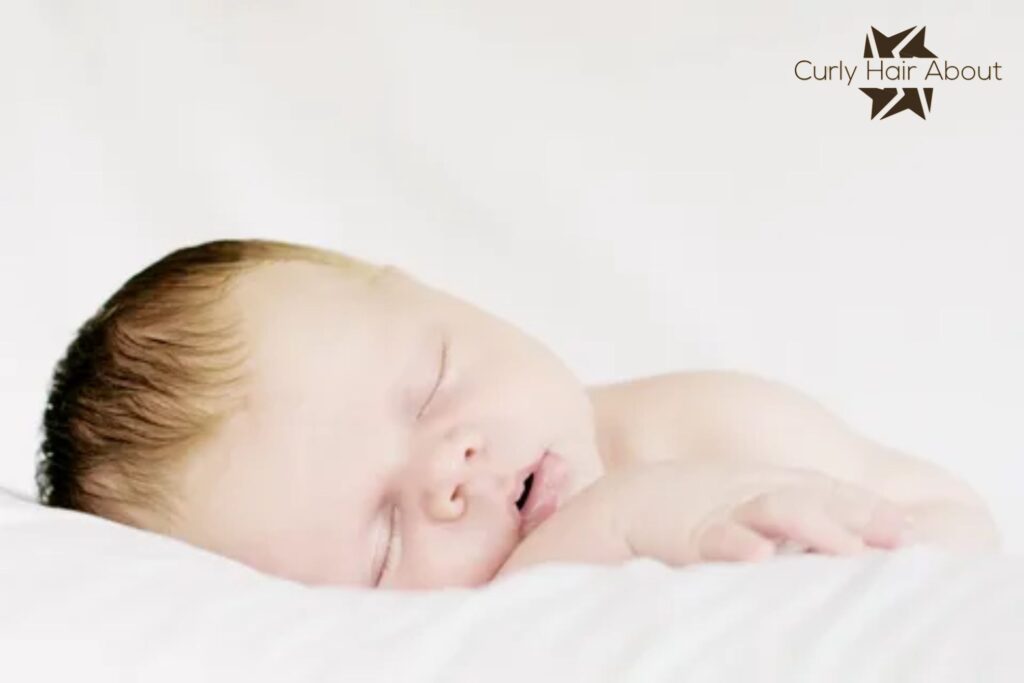
Baby hair typically starts to grow in the womb at around 14 weeks of pregnancy. Initially this hair is fine and soft known as lanugo which helps regulate the baby’s body temperature.
Most of this hair is shed before birth and the baby’s permanent hair begins to grow after delivery. The timing and thickness of a baby’s hair can vary and the final texture often develops in the months following birth.
Do children have dumb hair on birth?
No, children don’t have dumb hair at birth. The texture and type of a baby’s hair are determined by genetics.
Babies may be born with fine soft hair often referred to as lanugo which eventually falls out and is replaced by their permanent hair.
The appearance and characteristics of a child’s hair can vary but it’s a natural part of their development.
Genetic Determinants of Hair Texture
Understanding that a baby’s hair characteristics, such as texture and type, are primarily influenced by genetic factors.
Fine Lanugo Hair at Birth
Exploring the phenomenon of babies being born with fine soft hair known as lanugo, which is a temporary covering that later gives way to their permanent hair.
Natural Evolution of Baby’s Hair
Detailing the natural process by which a baby’s initial lanugo hair is shed and replaced by the permanent hair determined by their genetic makeup.
Dispelling Myths about “Dumb Hair”
Clarifying misconceptions surrounding a baby’s hair at birth, emphasizing that it is a result of genetic inheritance and not indicative of intelligence.
Did you feel any similarities in your children’s Hair texture changes?
Parents often notice similarities in their children’s hair texture changes observing whether it becomes curly straight or wavy over time. These variations can be influenced by genetic factors passed down from parents.
Sharing experiences and discussing these changes can be a delightful way for families to connect and appreciate the unique traits each child inherits.
How will I know if my baby’s hair will be curly?
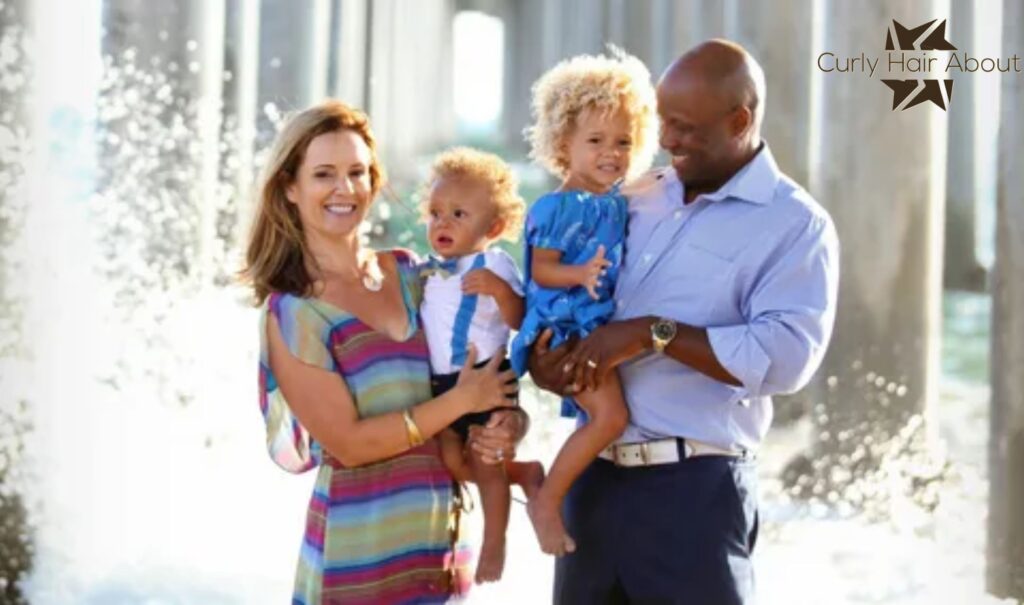
Predicting whether your baby will have curly hair involves understanding the genetic factors at play. If both parents have the curly hair gene there’s a good chance your baby will inherit this trait.
However, genetic expression can vary and environmental factors may also contribute to the final outcome.
While you can’t be certain observing family traits and waiting for your baby’s hair to grow will eventually reveal its natural texture.
Genetic Factors in Hair Texture
Understanding the genetic basis of hair texture is crucial in predicting whether a baby will have curly hair. Various genes inherited from both parents contribute to the development of this trait.
My Baby Have Curly Hair Curly Hair Gene Transmission
If both parents possess the curly hair gene, the likelihood of the baby inheriting this trait increases. Exploring how genetic information is transmitted helps in predicting the potential for curly hair in the next generation.
Complex Interplay of Traits
Predicting a baby’s hair texture involves considering the complex interplay of multiple genetic factors. It’s not just about one specific gene rather, it’s a combination of various elements inherited from both sides of the family.
Inheritance Patterns from Ancestors
The inheritance of curly hair extends beyond parents to include grandparents. Examining the genetic legacy from previous generations provides insights into the intricate patterns that influence the baby’s potential for expressing curly hair.
What age do babies get their real hair texture?
Babies are typically born with fine and soft hair and their real hair texture starts to become evident in the first few months of life.
The final texture is largely determined by genetics and by the age of one many babies showcase their unique hair characteristics.
Factors like environmental conditions and overall health can also influence the development of a baby’s hair texture over time.
Initial Hair Texture
Exploring the newborn’s fine and soft hair – an overview of the typical hair characteristics presents at birth.
Development Over Months
Tracking the evolution of a baby’s hair texture in the initial months – how it transforms and becomes more distinct.
Genetic Influences
Understanding the role of genetics in shaping a baby’s hair – how inherited traits play a significant part in determining the final texture.
Environmental Factors
Exploring how external factors such as climate, exposure, and care routines can also influence the development of a baby’s hair texture during the early stages of life.
What are the odds of my baby having curly hair?
Explore the genetic magic of curly locks! The odds of your baby having curly hair depend on genes from both parents. Learn more about genetics and discover how to properly wash curly hair for males in our comprehensive guide.
note that hair texture is influenced by multiple genes and the outcome can vary other factors including environmental influences and the interaction of different genetic combinations contribute to the unpredictability of a baby’s hair type.
In essence while genetics play a significant role the precise odds of your baby having curly hair are influenced by a complex interplay of various genetic factors.
Genetic Inheritance and Curly Hair
Explore how the likelihood of a baby having curly hair is intricately linked to the genetic makeup inherited from both parents.
Curly Hair Gene in Both Parents
Discuss the increased chances of a baby inheriting curly hair when both parents carry the specific gene responsible for curly locks.
Complexities of Genetic Traits
Highlight the complexity of genetic traits and how the interplay of various genes from both sides influences the final outcome of a baby’s hair texture.
Environmental Factors and Hair Development
Acknowledge the role of environmental factors alongside genetics in determining a baby’s hair type.
Important Considerations for Expecting Parents
Provide insights into the importance of understanding genetic factors and considering both parents’ genetic history when anticipating the potential for curly hair in their baby.
How long does it take for a baby’s curly hair to set in?
The development of a baby’s hair texture begins in the womb with genetics playing a significant role. While some babies may be born with a certain amount of hair it’s common for their hair texture including curls to become more apparent in the first few months after birth.
The exact time it takes for a baby’s curly hair to set in can vary but many parents notice distinct curl patterns emerging as their baby grows and their hair continues to develop. Patience is key as each baby’s hair journey is unique and can unfold over time.
Do babies outgrow curly hair?

Curly hair in babies is often a result of genetics and while some infants may have curls that persist into childhood it’s not uncommon for hair textures to change as they grow.
The hair follicles undergo developmental changes and factors like hormones and genetics contribute to alterations in hair texture.
Therefore, some babies may outgrow their curly hair and experience a shift to a different hair type as they reach toddlerhood or early childhood. It’s a natural part of their growth and development.
Genetic Influence on Curly Hair in Babies:
Explore how genetics play a crucial role in determining whether a baby will have curly hair. Discuss the impact of curly hair genes inherited from parents and grandparents.
Changing Hair Textures during Growth:
Highlight the common phenomenon of babies experiencing changes in their hair textures as they grow. Discuss factors such as age and environmental influences that contribute to these changes.
Persistence of Curls into Childhood:
Examine cases where infants maintain their curly hair into childhood and discuss the factors that contribute to the persistence of curls. Address how the expression of genetic traits continues to shape a child’s hair throughout development.
Why do babies cry when their parents cut their hair?
Babies may cry during a haircut because of the unfamiliar sensations and fear of the unknown. The sound of scissors the sensation of hair being snipped and the new feeling on their head can overwhelm infants not accustomed to the experience.
The proximity of a stranger (the hairdresser) and the confinement of a chair may also contribute to their distress. Parents can help by creating a soothing environment, using distraction techniques and maintaining a calm demeanor.
Offering a favorite toy playing gentle music or allowing the baby to hold onto a soft cloth can provide a sense of security during the haircut making the experience more positive for both the baby and the parents.
How do you know what type of hair your baby will have?
| Factor | Influence on Baby’s Hair |
| Genetics | Determines hair color, texture, and pattern; inherited from parents and grandparents. |
| Parents’ Hair Types | Baby is likely to inherit hair characteristics from both mother and father. |
| Family History | Consider the hair types of grandparents and other relatives for potential genetic influence. |
| Birth Hair | The hair a baby is born with may change in color or texture over time. |
| Environmental Factors | Climate and living conditions can affect hair health and appearance. |
| Age and Development | Hair may change as the baby grows, with texture evolving over time. |
| Mixed Heritage | If parents have different hair textures due to diverse ancestry, the baby may have a combination of traits. |
Can babies get curly hair from grandparents?
Babies can indeed inherit curly hair from their grandparents due to genetic factors. If the curly hair gene is present in the grandparents’ genetic makeup it can be passed down to the baby through their parents.
Hair traits are complex and can skip generations so even if the parents don’t have curly hair the gene may still be present and expressed in the baby’s hair.
Genes from both maternal and paternal sides contribute to the baby’s hair texture, creating a diverse range of possibilities influenced by family genetics.
FAQ’s
Is it possible for two parents that have straight hair to have a child with curly hair? If yes, how?
Yes, it’s possible if both parents carry the recessive curly hair gene, which can be inherited by the child.
Can straight haired parents with a curly/wavy haired kid?
Yes, straight-haired parents can have a curly/wavy-haired child if both parents carry the curly hair gene.
How can straight haired parents have a curly/wavy haired kid?
Straight-haired parents can have a curly/wavy-haired kid if both carry the curly hair gene which can be inherited from grandparents or other relatives.
Conclusion
the likelihood of a baby having curly hair is determined by genetics. If both parents carry the curly hair gene there is a higher probability that their child will inherit curly hair. However, genetic expression can be complex and other factors such as environmental conditions may also play a role in determining the baby’s hair texture. Ultimately the outcome is a unique blend of genetic inheritance and environmental influences that contribute to the individual characteristics of the baby’s hair.
It’s important to note that predicting a baby’s hair type with absolute certainty is not always possible, as genetic variations can lead to surprises. Regardless of the hair type, providing proper care and creating a loving environment for the child is key to ensuring their overall well-being and happiness.

Matthew, an expert with 10 years of experience, is the author behind curlyhairabout.com, sharing valuable insights on curly hair care.
